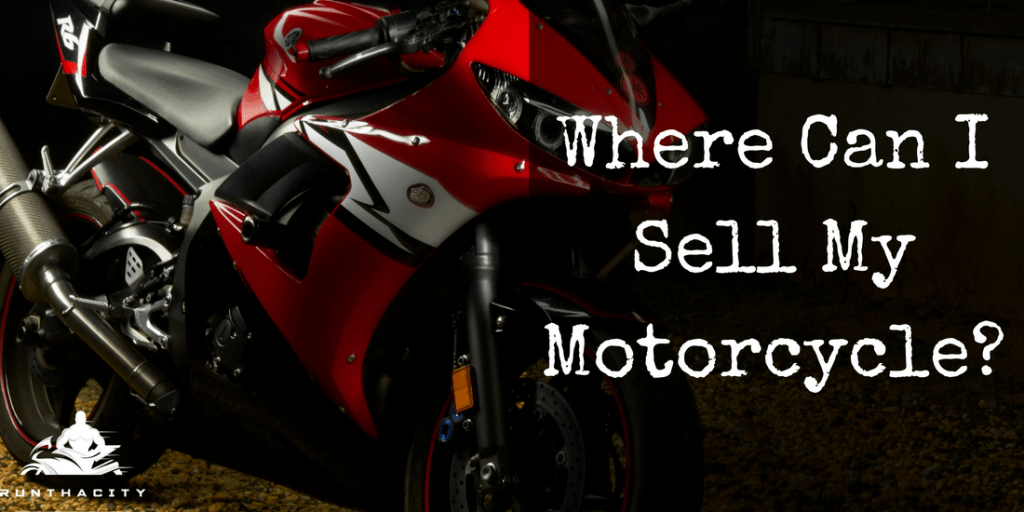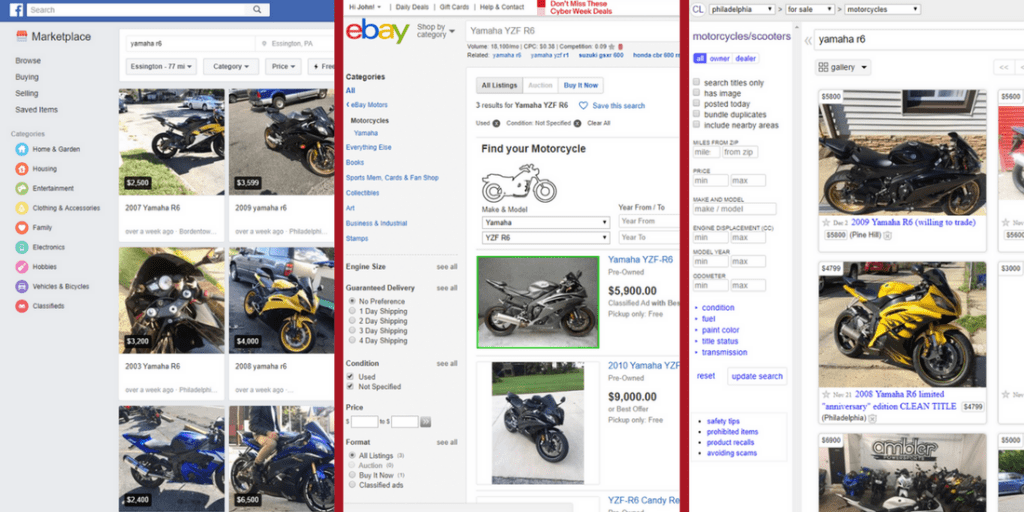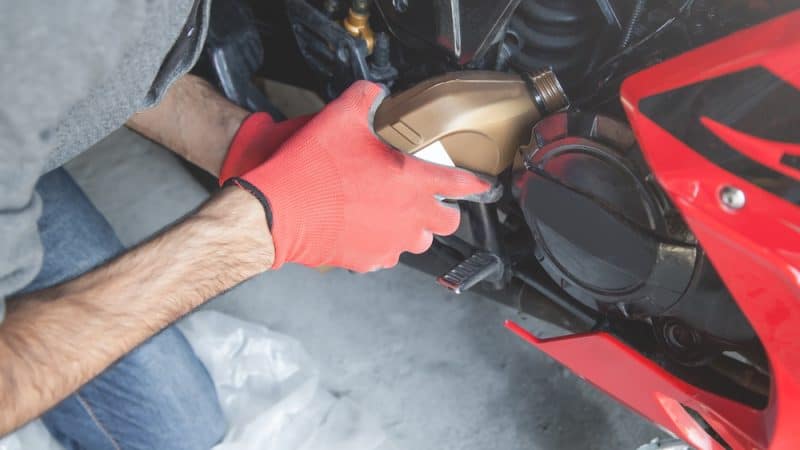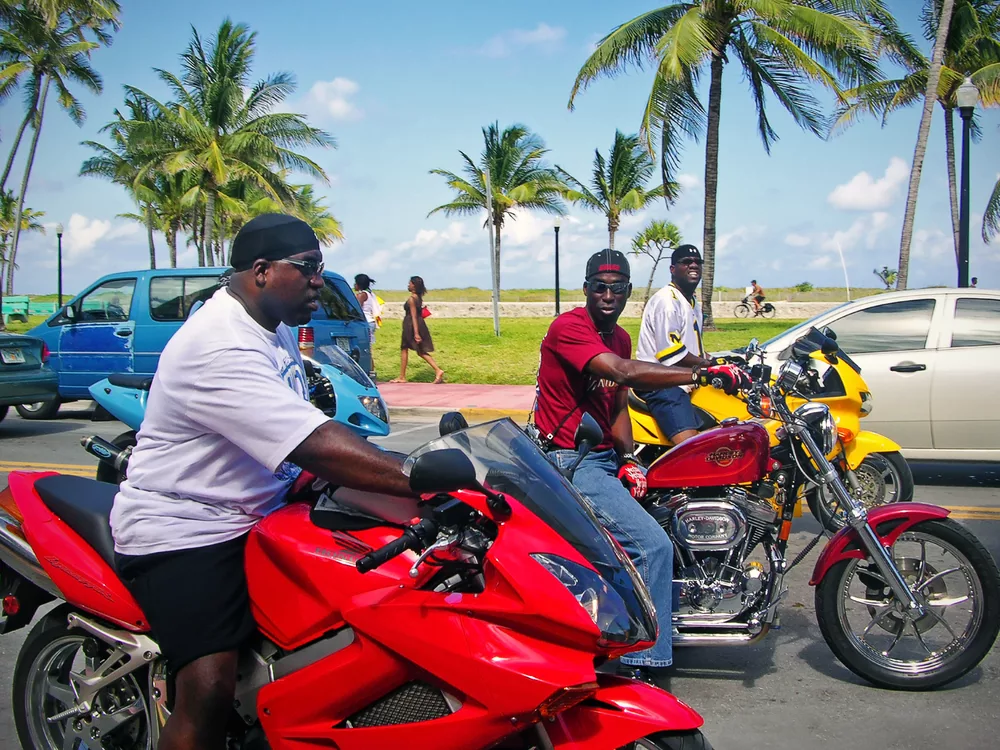An underrated aspect of learning how to ride a motorcycle goes beyond turning and popping wheelies. No, it’s something seemingly much more simple than that. Do you shift? Sure, shifting gears should be easy, because it’s a basic function; but shifting gear does have a layer of complexity that beginning cyclists could have problems mastering right away.
Here’s everything you need to know about shifting gears on a motorcycle.
Motorcycle Gears Basics
The three basic controls are ones that you might already know—the throttle, the clutch, and the gear selector. You use the throttle to rev the engine, the clutch to engage and disengage the brakes (transmission), and to select gears. For instance, if you pull the left hand clutch towards you, the engine revs without ever moving the bike.
The gear pattern can be clicked through by using the gear selector lever and is moved by your left foot. Most bikes have the following gears, starting with the lowest first:
• First gear
• Neutral
• Second gear
• Third gear
• Fourth gear
• Fifth gear
• Sixth gear (depending on the bike)
As you can see, shifting fears is sequential. Up or down, neutral (N) is always put between 1st and 2nd gear.
Technique For Motorcycle Shifting
It’s best to learn the proper technique required to maneuver through shifting gears before learning how to do anything else.
Steps of the proper shifting technique:
- Disengage the clutch. Use your left hand to pull it towards you.
- Select the correct gear by using your left food on the shifting lever.
- Slightly rev the engine if shifting up.
- Gradually release the clutch. Don’t pop it.
- Feather the throttle while releasing the clutch to accelerate smoothly.
- Continue revving if you which to switch to another gear in succession. Otherwise, find a nice cruising speed to maintain.
Shifting With Sound and Feel
Have you ever heard wailing motorcycle engines on the road? You’ve probably thought to yourself, “Is that rider even shifting?” That’s you using the basic rule of sound. In basic terms, if an engine starts to scream, you shift to an upper gear. If the engine starts to grumble, then shift the engine lower.
There a many methods to help you do this properly. Beginners should only focus on the simplest method. Afterwards, you can experiment.
Start off by riding in first gear. Try to sense to point when you need to switch to second gear. This means the engine isn’t yet screaming, but you are feeling the natural inclination to gain more speed. The clutch will disengage easily.
Should the engine start to scream, this means you’ve hit the red line, otherwise known as the built-in limiter. The limiter is placed in the engine to ensure the bike doesn’t overextend itself and burn up.
If you shift a gear up too soon, the bike could stall or choke. Restart the bike. Try again. Keep working through the gears until you can hear and feel when it is time to gear up.
Shifting Smoothly
You will notice that there’s no mathematical equation to figure out the “when” behind shifting. Every bike has a unique behavior that depends on how you handle it. For instance, if the bike jerks when you release the clutch, you’re being too abrupt. If the bike tends to lurch during shifts, you’re applying too much throttle. If the motorcycle’s speed dips during shifting, you need to rev the engine more between gear changes. Pay attention to the clutch, throttle, and gear selector, because these all interact and are dependent on one another.
Mechanics of Movement
Let’s back-up for a moment. Now that you have this idea in your mind that you need to listen and feel and understand with muscle memory what to do when shifting, it’s time to talk about what is happening inside the bike while you’re doing the actions.
The clutch is the first thing you touch when it’s time to shift gears, unless you have an automatic motorcycle or a quick shift. Once the clutch is engaged, meaning the lever is out and power is send to the rear tie, little springs press on the clutch plate that connect the primary drive to the part that rotates from the pistons going up and down.
When you pull the lever, the plate separates and releases the connection to the motor. In this moment, you can change gears.
That’s when you take your foot and move the gear selector. On the gear selector is a piece called a collar that has “dogs.” This dogs mesh together with the fork in the same way you interlace your fingers. When you move your foot up and down on the selector, the dogs and fork connect to help change the gear. Then, you find the right gear and accelerate.
Keep this in mind while reading the next two sections about upshifting and downshifting.
Upshifting
Most of this article has been devoted to upshifting. Upshifting is easier than downshifting, because you are accelerating. This means that if you do any of the steps of shifting a little too quick, there’s less of an impact. Of course, this could result in a sudden jolt of power to the rear wheel, causing the front tire to come off the ground.
(Note: You should only practice stunts in a controlled environment and when you have gained enough experience.)
Downshifting
On the opposite end of upshifting is downshifting, which tends to go a little less smoothly. If you release the clutch too quickly while downshifting, the sudden downward change can cause the gear to slow down the rear tire, compressing the front end, and causing a lack of traction in the back end. You need to be able to control the release of the clutch.
Be careful when rounding corners and decreasing your gears for this reason. You don’t want to suddenly lose traction right when you need more grip on the asphalt. That could cause the bike to skid to the side.
False Neutral
When downshifting, you could accidentally hit a false neutral. This can happen anywhere there shouldn’t be a neutral, including between 3rd and 4th or 4th and 5th and so on. This could happen if the dogs don’t connect with the fork when selecting gears. There is power loss to the rear wheel.
If you end up in a false neutral, pull on the clutch, and put the bike into a higher gear. You can prevent excessive damage to the bike. Be quick and make sure you move into the correct once you get out of false neutral.
With that, you should be able to master the basics of shifting. Practice the timing of the clutch release and working with the gear selector for a bit. You will soon be able to shift between gears like someone who has been riding for many years.
Liked this article and want more beginner motorcycle tips? Check out my YouTube channel and don’t forget to hit that subscribe button.
You Might also like
-
Where Can I Sell My Motorcycle?
If you have made the decision to sell your motorcycle, whether because you want to upgrade or because you have different priorities, knowing where to sell your bike is as important as knowing what to ask for it.
Selling your bike is already a difficult enough decision in many cases, so there is no need for the added stress of knowing the best place to sell your motorcycle. These tips can help you find the perfect place to sell your bike and will provide you with some tips that could make the process go more smoothly. You can find a few more tips on how to sell your motorcycle here.
Where Can I Sell My Motorcycle Offline?
Selling a motorcycle offline may not be as difficult as you think. You can place a “For Sale” sign on the bike when it is parked in your yard and it is possible someone riding by may decide it is the perfect bike for them. You can also take out an ad in the classified section of your local newspaper, although you will need to pay for the ad whether the bike sells or not. If there is a bulletin board in your neighborhood where people post about lost pets or yard sales, ask if you can post a sign about your motorcycle.
Tell your friends, family and co-workers that your bike is for sale. They may know someone who is in the market.
If you are selling your bike because you want to upgrade, talk to the dealer about trading in your old bike on a new one. Keep in mind that a dealer may offer you less for the bike than you could get if you sold it yourself, but it would eliminate the hassle of selling it yourself.
Offline Selling Options:
Dealership: Selling your motorcycle to a dealership can be a convenient option if you’re looking to trade it in for a new model. While you may receive a lower offer compared to selling it privately, it eliminates the hassle of handling the sale yourself.
Local Newspaper: Placing an ad in the classified section of your local newspaper can reach potential buyers in your community. However, you’ll need to pay for the ad, regardless of whether your bike sells or not.
Front Lawn: Putting up a “For Sale” sign on your bike while it’s parked in your yard might catch the eye of passersby, leading to potential buyers.
Flea Market or Motorcycle Show: Participating in flea markets or motorcycle shows can expose your bike to a targeted audience of enthusiasts who might be interested in purchasing it.
Bulletin Boards: Check if there are bulletin boards in your neighborhood where you can post a sign about your motorcycle for sale.
Advantages of Offline Selling:
When you sell your motorcycle offline, one cool thing is that you can reach folks right in your own community. You might get lucky with someone riding by, checking out your “For Sale” sign, and thinking, “Hey, that’s the perfect bike for me!” Plus, you get to have those face-to-face interactions with potential buyers. It’s a chance to show off your bike in person, talk about its features, and make a more personal connection.
Disadvantages of Offline Selling:
Now, the downside of selling offline is that your audience is more limited compared to the vast world of the internet. You’re sticking to your local turf, and not everyone in your community might be interested in buying a motorcycle at that moment. It can take some time and effort to find the right buyer, and you might need to keep at it for a while.
Also, if your motorcycle is kind of niche or unique, you might not find the right audience nearby. It’s like trying to sell an old-school chopper in a town that’s all about sportbikes. You might not find the perfect match for your bike’s awesomeness.
Where Can I Sell My Motorcycle Online?
There are many different online options you can use to sell your bike. Craigslist is a free online advertising service, but keep in mind that some of the people who use the service are not above-board. If a buyer wants to purchase the bike from a Craigslist ad, insist on cash or certified funds at the time of the sale.
Ebay is another option for selling your bike, especially if it is unique or hard-to-find. You do not pay for listing your bike on Ebay until it sells and the buyer will pay for any shipping costs. It could be difficult, however, to find a company that will ship your bike so you want to research shipping prior to listing the bike for sale.
Online Selling Options:
Craigslist: Craigslist is a popular online classifieds platform where you can post your motorcycle ad for free. However, exercise caution as there might be some scammers and fraudsters on the platform. Insist on cash or certified funds for a safe transaction.
eBay: eBay offers a broad audience, making it suitable for unique or hard-to-find motorcycles. You only pay a fee when your bike sells, and the buyer covers shipping costs. Research shipping options before listing your bike.
Facebook Marketplace: Facebook Marketplace has gained popularity for buying and selling motorcycles and parts. With a large user base, it’s an accessible platform to reach potential buyers.
Facebook Groups: Joining motorcycle-specific Facebook groups can connect you with enthusiasts interested in your type of bike.
Motorcycle-Specific Websites: Platforms like Motorcycle.com, CycleTrader, and RumbleOn focus on motorcycles, ensuring your ad reaches a targeted audience.
Facebook Marketplace
Recently Facebook Marketplace has become really popular for buying and selling motorcycles and motorcycle parts. You can discover bikes for sale near you. Easy to use on your phone or your desktop, and most people already have a Facebook account.
Take a look at a few other places you can sell your sportbike online:
The Best Apps to Sell My Motorcycle
One option for selling your bike online, designed specifically for buying or selling motorcycles, is RumbleOn. The site is available as a mobile app that allows you to put in all the info about your bike, take photos and upload to the site. RumbleOn sends you a Cash Offer Voucher that is good for three days. If you agree, they come get the bike and handle all the paperwork.
CycleTrader is another app that allows you to sell motorcycles and also includes reviews available online.
These apps are available in the Apple or Google Play Store:
Google Play Store Apps
On Apple Itunes Apps
Advantages of Online Selling:
Selling your motorcycle online opens up a whole world of possibilities! You get a way bigger audience, reaching potential buyers from different corners of the globe. It’s like your bike is getting the red carpet treatment, and people from all over can admire its beauty.
And the best part? You can do it all from the comfort of your own home, sipping on a cup of coffee. No need to put on pants or leave the house. Just hop online, snap some pics of your awesome bike, and let the internet do its magic. It’s super convenient, accessible 24/7, and you can connect with buyers from anywhere with an internet connection.
The online world gives you cool options for targeted advertising too. If you’ve got a sporty beast, you can hit up those motorcycle-related websites and social media groups where fellow speed enthusiasts hang out. Talk about getting your bike in front of the right crowd!
Disadvantages of Online Selling:
But hey, the internet isn’t all rainbows and unicorns. There are a few things to watch out for when selling online. Scammers and fraudsters like to lurk in the shadows of certain platforms, so you’ve got to be vigilant. Don’t worry though, we’ll tell you how to deal with those bad apples in a bit.
Also, dealing with inquiries and negotiations online can sometimes feel like you’re running a 24/7 customer service hotline. It can take up some of your time, replying to messages and answering questions. But hey, it’s all part of the game, right?
Oh, and shipping logistics, that can be a bit of a headache. Especially if your motorcycle is a big boy. You’ve got to figure out how to get it from point A to point B without a scratch. But don’t worry, where there’s a will, there’s a way! Consider A1Autotransport to transport your vehicle.
Warning about Scams and How to Avoid Them:
Now, let’s talk about those pesky scammers. They’re like the gremlins of the internet, always trying to cause trouble. But don’t worry, we’ve got some tips to keep you safe from their tricks.
First things first, when someone wants to buy your bike, insist on cold, hard cash or certified funds. No personal checks or money orders. Those things can be faker than a unicorn.
If you’re meeting up with a potential buyer, be smart about it. Choose public places with cameras or bring a buddy along for backup. Safety first, always!
And before you hand over your precious motorcycle, make sure any certified funds are legit and safely cleared in your account. No funny business!
Remember, this is about selling your bike, not your life story. Be cautious about sharing personal info with potential buyers. Stick to talking about your motorcycle and its amazing features.
One last thing – do some online sleuthing. Research the buyer’s profile and reputation if you can. It’s like giving them a background check to make sure they’re the real deal.
With these tips in your back pocket, you’ll be a scam-fighting superhero, ready to conquer the online selling world! Stay safe and sell that motorcycle like the boss you are!
Avoid Scams When Purchasing a Mortocycle With This Checklist
Insist on Cash or Certified Funds: Avoid accepting personal checks or money orders, as they can be forged or canceled. Insist on cash or certified funds for a secure transaction.
Meet in Safe Locations: If meeting with a potential buyer, choose public places with surveillance cameras or bring a friend along for added safety.
Verify Payment: Before handing over the motorcycle, ensure that any certified funds are legitimate and have cleared in your account.
Don’t Share Personal Information: Be cautious about sharing personal information with potential buyers. Stick to discussing the motorcycle details.
Research Buyer’s Information: If selling online, research the buyer’s profile and reputation if possible to gauge their credibility.
By following these guidelines, you can reduce the risk of falling victim to scams and ensure a safer selling experience.
In conclusion, selling your motorcycle can be a challenging decision, but with the right approach and platform, you can find the perfect buyer. Offline options offer localized reach and personal interactions, while online platforms provide access to a broader audience. To safeguard against scams, practice caution, and follow best practices when dealing with potential buyers. Good luck with your motorcycle sale!
If you want more information on selling your motorcycle or need tips on getting the best price for your bike, subscribe to our YouTube channel.
-
How Often Do I Need To Change Motorcycle Engine Oil?
Changing engine oil is essential to maintaining the life of your beloved motorcycle. If you don’t consistently check the oil level and change the oil when it gets old or dirty, the lifespan of the motor is severely shortened.
Let’s get started.How Often You Need To Change Motorcycle Oil
Most riders will ask the question, “How often do I need to change the motorcycle engine oil?” at least once. The answer depends on the make/model of your bike (we’ll be discussed a Yamaha YZF-R6), the type of oil you used, and how often you ride.
If you used a mineral-based engine oil (the simplest, cheapest kind), then you should change the engine every 2,000 miles if you’re riding frequently. If you don’t ride regularly, you can change your oil at least twice a year.
When using a semi-synthetic engine oil, change the oil once every 5,000-6,000 miles.
Lastly, if you use a fully-synthetic engine oil, change the oil after 7,000-10,000 miles.
Semi- and fully-synthetic motor oils are more expensive than mineral-based engine oil, but the plus side is that they last much longer. The only time when you might have to change before the recommended mileage, regardless of the motor oil type, is if you are riding your bike every single day or you commute a great distance frequently.Yamaha YZF-R6 Oil Change Instructions
You can find the following information in the owner’s manual of your Yamaha YZF-R6. If you don’t have this specific Yamaha model, it’s recommended you find the specific instructions for your make and model, as the steps could be different.
- Checking the engine oil level:
- Put the motorcycle on a level surface and hold it in an upright position, as straight as possible. Slight tilts could result in a false read.
- Start the engine. Let the oil warm up for several minutes.
- Turn the motorcycle off again.
- Wait for the oil to settle. This may take a few minutes.
- Remove the engine oil dipstick. Wipe it clean with a cloth then insert the stick back into the fuel reservoir. Take a moment to look at the maximum and minimum oil level lines before testing if you’re not familiar with it. Don’t screw the stick in. Remove it again to get your reading.
- If the engine oil level is at or below the minimum level, remove the engine filler cap and add a sufficient amount of oil to get the level to the recommended spot.
- Insert then tighten the engine oil dipstick. Afterwards, install and tighten the oil filler cap.
During this stage of your oil check, you might find that you need to change the oil completely.
How To Tell If You Need An Oil Change
The normal color of oil is transparent, brownish, maybe even slightly black. When oil is “clean,” it works best for protecting and keeping the engine clean.
Now, “dirty” oil is when the water consistency is lost. It feels slightly gritty when rubbed between your fingers. The color will be darker, if not completely black, and it will have lost it’s transparency.
You might also notice that the engine is making bizarre noises when the oil is dirty. All these signs point to needing an oil change.
How to change engine oil on a Yamaha YZF-R6:
- Put the motorcycle on a level surface.
- Removing the cowling.
- Start the engine for several minutes. Once warmed, turn the bike off.
- Place an oil pan under the engine to collect used oil.
- Remove the engine oil filler cap, the engine oil drain bolt, and lastly the gasket to drain the oil from the crankcase.
- Once the oil is drained completely, replace the gasket and bolt, fill the tank to the recommended level, and then replace the engine oil filler cap.
When To Change The Oil Filter
Change the filter every time you change the oil or once every 2,000 to 3,000 miles if you’re using synthetic motor oil. You don’t want to ride around with a dirty, old oil filter because it traps any dirt, dust, debris, metal, and sludge that would otherwise harm your engine.
Not a frequent rider? Again, change your oil at least twice a year and pair that with a filter change.Conclusion
To wrap everything up, frequent riders will need to change their oil more often than those who ride once in a while. The quality of the motor oil changes the mileage for oil changes, and synthetic oils will have the longest life. Make sure to check the oil level and consistency often so you can protect the engine and preserve the life of your ride.
Enjoyed this information and want more? Head over to my YouTube channel. Subscribe and receive notifications for every update. -
The Psychology of Speed: Understanding the Sportbike Lifestyle
Sportbikes are known for their high-performance capabilities, sleek design, and thrill-seeking lifestyle. From track days to weekend rides, the sportbike culture is a unique and passionate community that revolves around speed and adrenaline. But what is it about sportbikes and the lifestyle that appeals to so many riders? In this article, we’ll explore the psychology behind the sportbike lifestyle, from the thrill of speed to the sense of community and belonging.
The Thrill Of Speed
The thrill of speed is one of the biggest draws of sportbiking, and it’s what sets it apart from other forms of transportation. The sensation of cutting through the wind, feeling the power of the engine, and pushing your limits is unmatched. For many riders, the rush of adrenaline that comes from going fast is what keeps them coming back for more. Speed is a powerful force that stimulates the brain, releasing adrenaline and endorphins that create a euphoric state. This can be addictive, and the desire for more speed is what drives many sportbike riders.
But, it’s important to note that speed should never come at the expense of safety. Sportbike riders must always be aware of their surroundings, follow speed limits, and ride within their abilities. Responsible riding is key to ensuring that the thrill of speed remains a positive and safe experience.
Overall, the thrill of speed is a central part of the sportbike lifestyle and is what attracts riders to this high-performance form of transportation. Whether it’s the rush of adrenaline or the satisfaction of pushing your limits, the thrill of speed is what makes sportbiking such a unique and exciting experience.
Sense of Community and Belonging
The sportbike lifestyle often brings riders together to form a tight-knit community of like-minded individuals who share a passion for speed and the thrill of the ride. This sense of community and belonging can be incredibly empowering and can lead to lasting friendships and memories.
Whether it’s participating in track days, weekend rides, or simply hanging out at the local motorcycle hangout, sportbike riders often find a sense of camaraderie and belonging that they simply can’t find anywhere else. This sense of community is not just limited to local riders, but extends to a global network of riders who are united by their love of speed and the sportbike lifestyle.
Riding a sportbike can be a solitary experience, but when riders come together, it becomes a shared experience, and the thrill of speed is multiplied. Whether riders are racing on the track, exploring new roads, or simply cruising down the highway, the sportbike lifestyle is all about pushing boundaries, challenging oneself, and experiencing the thrill of speed.
For many sportbike riders, the sense of community and belonging is just as important as the thrill of speed. It gives riders the opportunity to connect with like-minded individuals, share their experiences, and enjoy the sport together. Whether it’s participating in group rides or simply hanging out and talking about bikes, the sportbike lifestyle offers riders a sense of belonging that they can’t find anywhere else.
Building Confidence and Skill
Building confidence and skill is a critical part of the sportbike lifestyle. Whether you’re a beginner or an experienced rider, sportbikes offer a unique challenge and the opportunity to continually improve your riding skills. For many sportbike riders, the thrill of riding fast is not just about speed, but also about mastering the machine and developing the confidence and skill to control it.
One of the ways to build confidence and skill is by taking a motorcycle training course, such as a beginner’s riding school or an advanced track day. These courses offer a safe and controlled environment to practice riding skills, receive feedback from experienced instructors, and learn from other riders. Additionally, you can also attend riding events or track days, where you can ride with other riders and experience the thrill of speed in a safe and controlled environment.
Another way to build confidence and skill is by practicing regularly. Sportbikes are designed for high-performance riding, and the more you ride, the more comfortable and confident you’ll become. Whether it’s riding to work, hitting the local twisties, or exploring new roads, regular riding will help you develop your skills and become a better rider.
Finally, riding with a group can also help build confidence and skill. Whether it’s a local riding club, a group of friends, or a track day organization, riding with others provides an opportunity to learn from more experienced riders and experience the thrill of speed in a supportive and fun environment.
In conclusion, building confidence and skill is an integral part of the sportbike lifestyle, and there are many opportunities to develop and improve your riding skills. Whether it’s through training courses, regular riding, or riding with a group, the sportbike lifestyle offers a unique challenge and the chance to become a better, more confident rider.
Conclusion
The sportbike lifestyle is about much more than just speed and adrenaline. It’s about the thrill of pushing yourself to the limit, the sense of community and belonging, and the opportunities to build confidence and develop new skills. Whether you’re a seasoned rider or just starting out, the sportbike lifestyle is a unique and exciting world that is waiting to be explored. So, why not join the sportbike community today and discover the psychology of speed for yourself?













2 comments on Beginner’s Guide To Shifting Gears On A Motorcycle